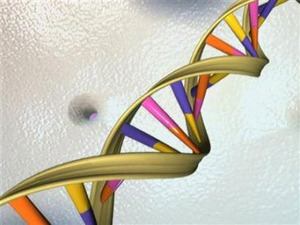Part of the puzzle of how the unfertilised egg wipes the DNA slate clean and reboots the genome to kick-start cell division following fertilisation has been uncovered by  scientists in Cambridge.
scientists in Cambridge.
One of the mysteries of developmental biology is how an egg cell can reset the genetic programmes being executed in DNA to give rise to a population of unspecialised stem cells that then turn into all of the mature tissues in the adult.
Equally baffling is the way in which the specialised cells of an embryo turn themselves into eggs capable of doing this.
In a human embryo, the reproductive tissues that will form eggs in a developing female and sperm-producing cells in a developing male, form outside the embryo in a structure called the yolk sac, which is attached at the site of the umbilicus, or belly button. The cells then migrate into the abdomen of the embryo where they turn into ovaries or testes.
This happens several weeks into development, meaning that the future eggs need to unspecialise themselves and put their genetic material into the correct state for turning into so called totipotent stem cells, which can give rise to all of the tissues in the body.
Key to this, is a process known as epigenetics. In the same way that a highlighter pen can boost the impact of a piece of text on a page, chemical markers applied to certain regions of the genome can alter the activity of genes in that area.
As cells become more specialised to do certain jobs, they acquire a unique epigenetic profile that reflects the genes that need to be on, or off, to fulfil those roles. When an egg cell is produced, and fertilised, it erases all of these epigenetic marks, resetting the system for a fresh start, but scientists don't know how.
Now, working with both mouse and human embryos, Walfred Tang and his colleagues have for the first time painstakingly unpicked the molecular clockwork behind the process. Writing in Cell, the Cambridge University scientists have found that two genes, once called SOX17 and another called BLIMP1, are crucial.
These genes trigger a network of other genes that, together, encode the molecular eraser that scrubs clean the epigenetic slate.
Interestingly, however, not all of the epigenetic markers, known as methylation sites, are removed About 5% of genomic regions, dubbed escapees by the team, are resistant to this reprogramming and keep their epigenetic marks, which has the effect of keeping genes in those areas set to "off".
Some of these escapee regions correspond to genetic sequences known as retrotransposons, which can disrupt DNA by jumping from one part of the genome to another. Marking up these areas as inactive might therefore be a protective mechanism.
Some of the other escapee areas highlighted by the study, however, contain genes linked to the development of the nervous system and which have been implicated in disorders like schizophrenia, while other regions contain genes linked to metabolic disorders and obesity.
The lack of reprogramming of these genetic regions might therefore underpin the known link between the health of a parent during conception and pregnancy and subsequent health effects in the baby during its adult life.
"Our study has given us a good resource of potential candidates of regions of the genome where epigenetic information is passed down not just to the next generation but potentially to future generations, too," says Tang.










Comments
Add a comment